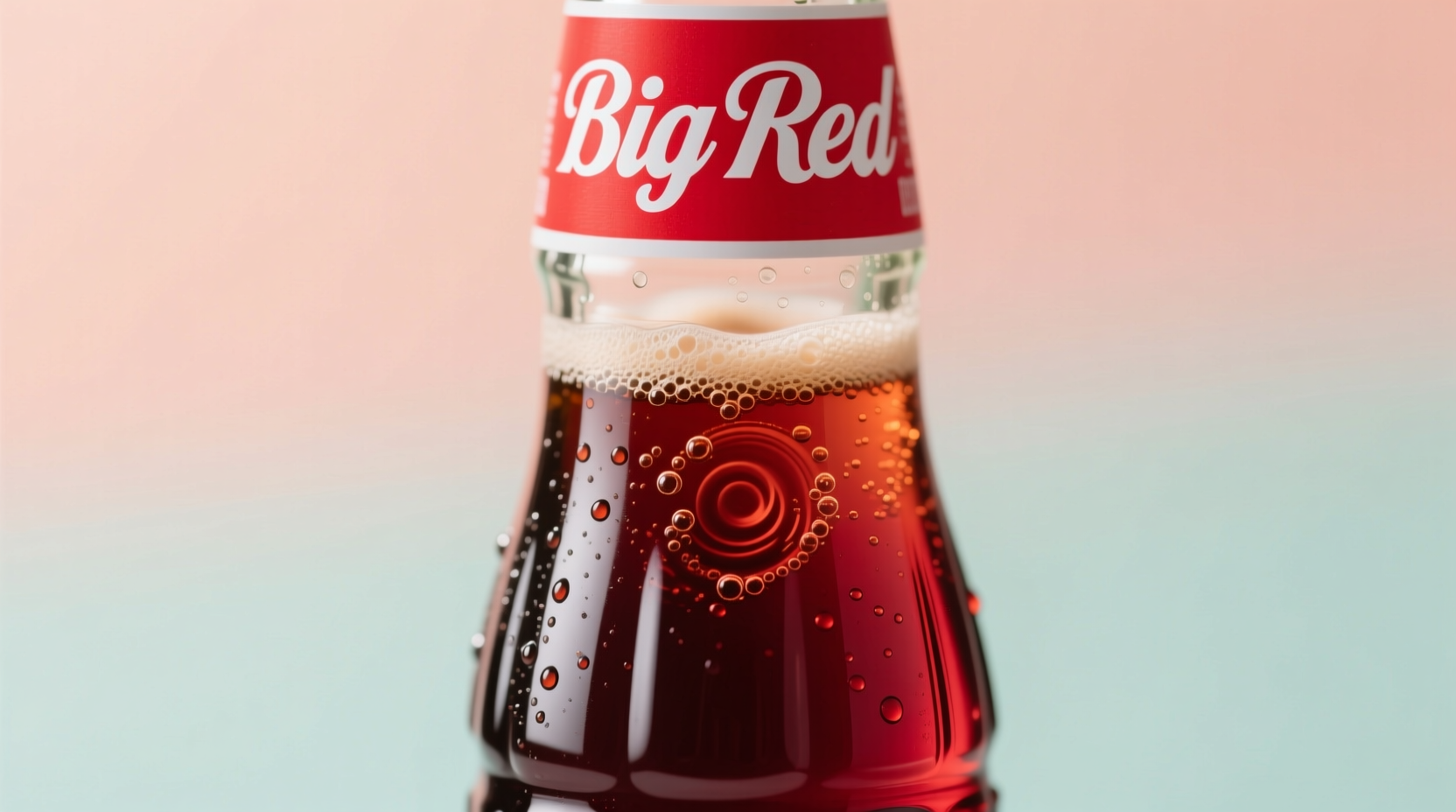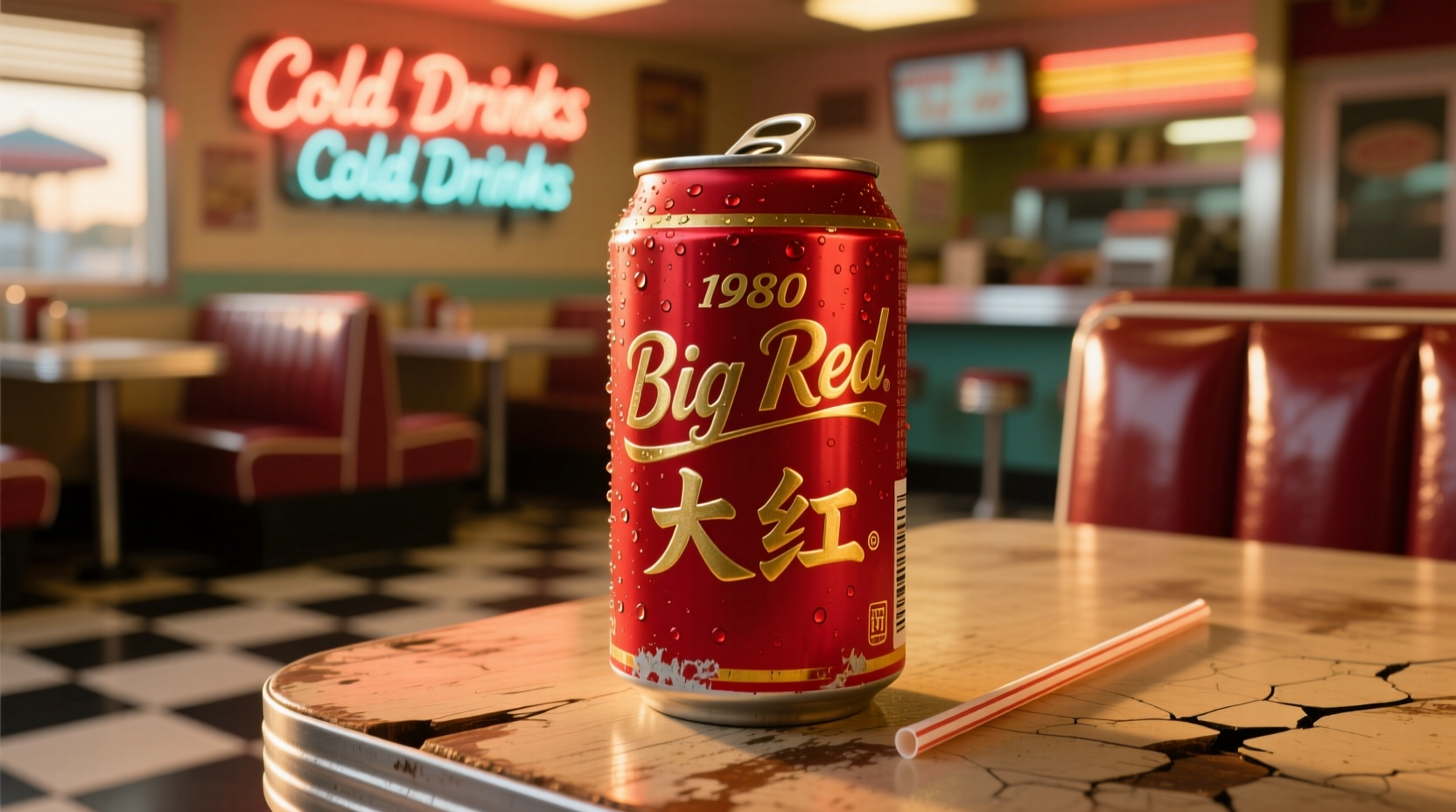Ever wondered what gives Big Red its unmistakable taste that sets it apart from other sodas? You're not alone. This Texas-born beverage has captivated soda lovers since 1937 with its vibrant red color and unique flavor profile that's neither traditional cola nor standard cream soda. In this comprehensive guide, you'll discover exactly what makes Big Red taste the way it does, how it compares to similar beverages, and why it maintains such a devoted following across certain regions of the United States.
The Distinctive Flavor Profile of Big Red
Big Red's signature taste comes from a carefully balanced combination of citrus and vanilla notes. The primary flavor components include:
- Orange essence - The dominant citrus note that gives Big Red its bright, refreshing quality
- Vanilla - Provides the creamy texture that distinguishes it from regular orange sodas
- Subtle spice elements - Including hints of cinnamon and other warm spices that add complexity
- Carbonation level - Slightly less fizzy than many mainstream sodas, enhancing the creamy mouthfeel
Unlike root beer, which relies on sassafras root (now typically replaced with artificial flavors due to health concerns), Big Red contains no wintergreen or sassafras elements. This makes it a completely different beverage category—often classified as "red cream soda" rather than root beer.
Big Red Flavor Evolution Timeline
Understanding Big Red's flavor requires looking at its historical development. Here's how the distinctive taste evolved:
| Year | Milestone | Flavor Significance |
|---|---|---|
| 1937 | Created by Groscup and Beverages in Waco, Texas | Original formula developed as "Sun Tang Red Cream Soda" with orange-vanilla base |
| 1958 | Renamed "Big Red" | Flavor profile refined for broader appeal while maintaining distinctive character |
| 1969 | Acquired by Dr Pepper Company | Formula preserved despite corporate ownership change |
| Present | Available in multiple formats including regular, diet, and zero sugar | Core flavor profile remains consistent despite formulation adjustments for modern preferences |
How Big Red Compares to Similar Beverages
Many consumers confuse Big Red with other red-colored sodas or cream sodas. This comparison clarifies the differences:
| Beverage | Primary Flavor Notes | Color | Texture | Key Distinguishing Feature |
|---|---|---|---|---|
| Big Red | Orange-vanilla with spice notes | Bright red | Creamy, smooth | Unique citrus-forward cream soda without root beer elements |
| Dr Pepper | 23 fruit flavors (cherry, licorice dominant) | Deep brown | Standard carbonation | Blend of 23 flavors with no single dominant note |
| Cream Soda | Pure vanilla | Clear or light yellow | Creamy | Straight vanilla flavor without citrus components |
| Root Beer | Sassafras, wintergreen, licorice | Brown | Creamy | Contains root-based flavors absent in Big Red |
Regional Popularity and Flavor Perception
Big Red's flavor profile resonates differently across regions, creating distinct consumption patterns:
According to beverage industry analysis from the Beverage Marketing Corporation, Big Red maintains strongest market penetration in:
- Texas and surrounding Southern states - Where it's often considered a regional staple
- Certain Midwest markets - With pockets of dedicated consumers
- International markets - Particularly in areas with American military presence
The University of North Texas Center for Hospitality and Tourism Research notes that Big Red's flavor profile aligns with regional taste preferences in the American South, where sweeter, creamier beverages traditionally perform well compared to more bitter cola profiles.
Identifying Authentic Big Red Flavor Characteristics
When evaluating whether you're experiencing genuine Big Red flavor, look for these key characteristics:
- The citrus-vanilla balance - Neither flavor should dominate; they should blend seamlessly
- The absence of root beer elements - No wintergreen or medicinal notes
- The distinctive aftertaste - A clean finish with lingering citrus notes rather than artificial sweetness
- The mouthfeel - Creamy without being syrupy, with moderate carbonation

Common Flavor Misconceptions
Several myths persist about Big Red's flavor profile:
- Myth: Big Red is just colored root beer
Fact: Big Red contains no sassafras or root beer elements—it's a completely different flavor profile based on citrus and vanilla.
- Myth: Big Red tastes identical to other "red cream sodas"
Fact: While similar products exist, Big Red's specific orange-vanilla ratio and subtle spice notes create a unique signature taste.
- Myth: The flavor has changed significantly over time
Fact: Despite minor formulation adjustments for modern preferences, Big Red has maintained remarkable flavor consistency since its 1937 creation.
Practical Flavor Applications Beyond Drinking
Understanding Big Red's flavor profile opens creative possibilities:
- Culinary uses: Works as a marinade base for chicken or pork, where the citrus notes tenderize while vanilla adds complexity
- Baking applications: Can substitute for buttermilk in cakes to add moisture and distinctive flavor
- Cocktail mixing: Creates unique brunch beverages when combined with sparkling wine or citrus juices
- Dessert pairing: Complements vanilla ice cream better than traditional root beer due to its citrus notes











 浙公网安备
33010002000092号
浙公网安备
33010002000092号 浙B2-20120091-4
浙B2-20120091-4